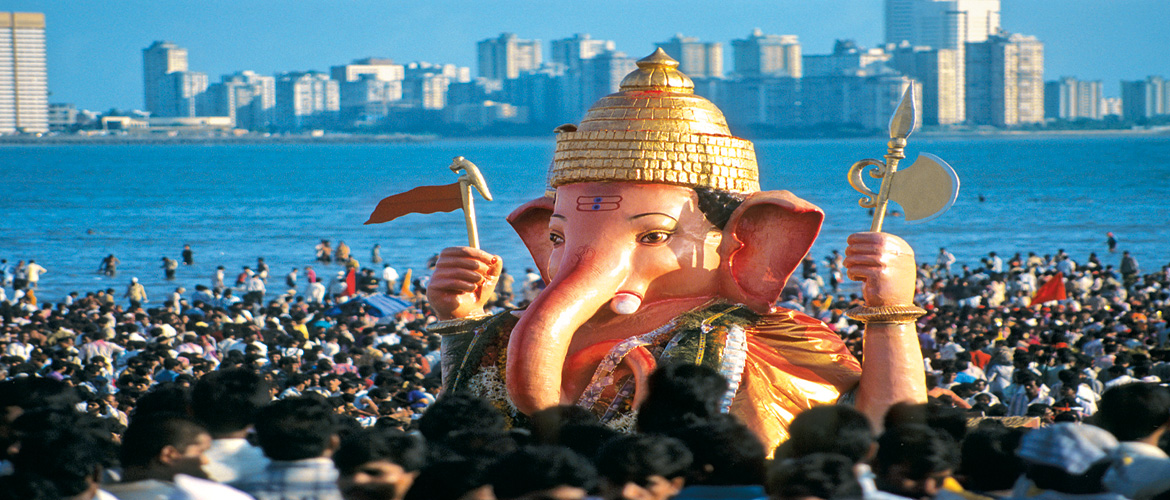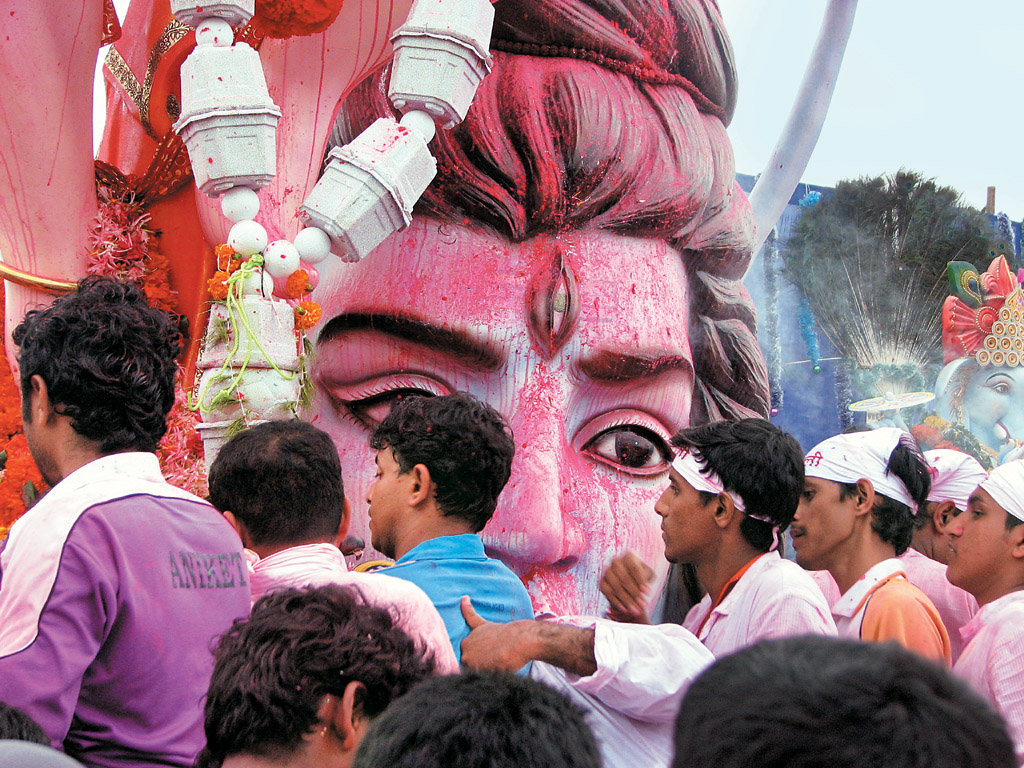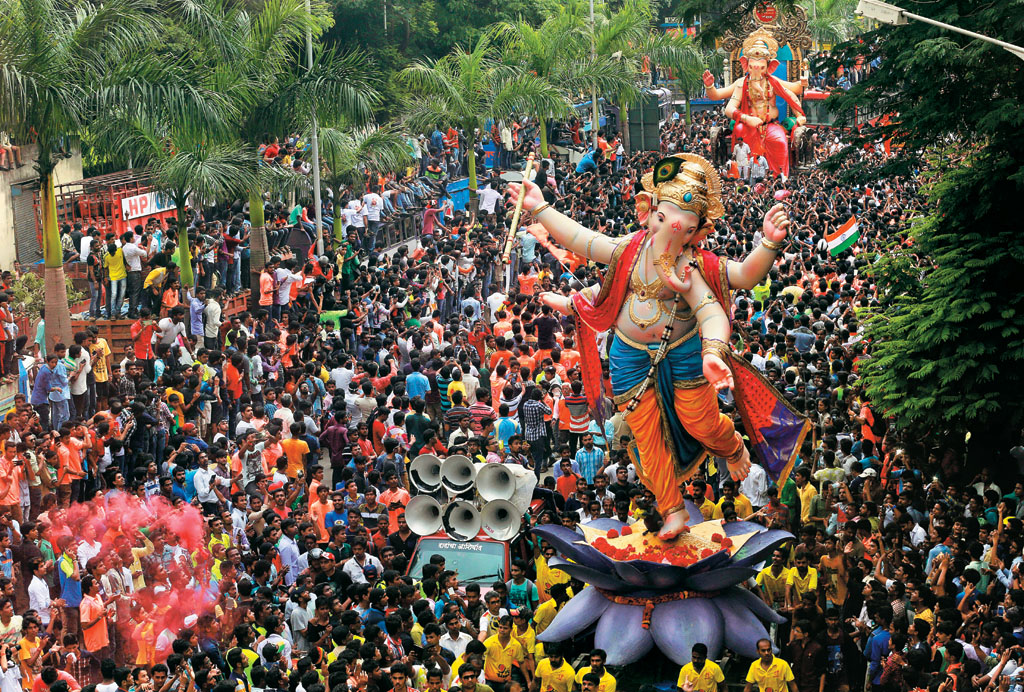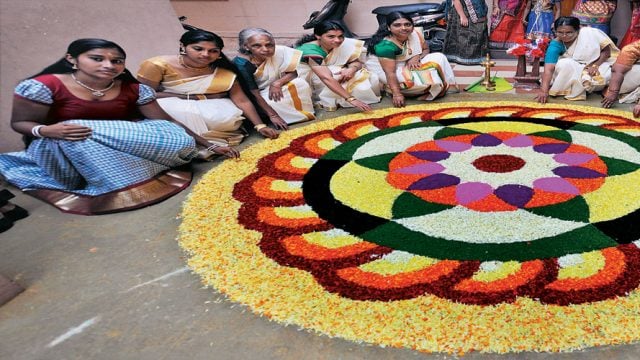Type Religious Festival Time 10 Days In August/ September Location Maharashtra Very few festivals in
The festival, which falls in the Bhadrapada month of the Hindu calendar, marks the birthday of Lord Ganesha, son of Shiva and Parvati. The first day of the festivities begin with prayers to the elephant-headed god, who is offered various delicacies as prasad. Prayers are offered on a daily basis for the ten days that follow, until the immersion. However, this large-scale celebration that Maharashtra (and now even parts of Telangana and Goa) witnesses, has a significant place in Indian history.
Legend and History
According to legend, Lord Ganesha couldn’t digest the food served to him during one of his birthday celebrations. As a result, his stomach burst. The Moon (who sits atop Shiva’s head) laughed at the incident. Infuriated, Goddess Parvati cursed the Moon and proclaimed that anyone who saw the Moon would face bad luck.
However, many suras (gods and other holy men) found it difficult to avoid the sight of the Moon in the sky and went to Lord Vishnu, in the hopes that he would solve their dilemma. Upon much deliberation, Lord Vishnu proclaimed that no harm would come to those who prayed to Ganesha on this particular day of Bhadrapada Shukla Chaturthi every year. Hence, people install clay idols of Ganesha in their houses and pray to him so that they don’t face bad consequences.
- Scenes from various processions during Ganesh Chaturthi
In 1892, the first public Ganesha idol was installed in Pune, on Laxmi Road. Social reformer and freedom fighter Lokmanya Balgangadhar Tilak saw in it an opportunity to unite people in the time of India’s struggle for independence. In 1893, he published the idea of a public Ganesh Chaturthi celebration in his Marathi daily, Kesari. This event brought together people from all walks of life on an equal platform and united them to fight for the freedom movement. Ever since, Ganesh Chaturthi has been a festival of large-scale public gathering and is being celebrated till date with ever increasing enthusiasm.
Things to See & Do
The most interesting thing to do during this 10-day festival is pandal hopping. There is no dearth of pandals in Pune or Mumbai during this period and some pandals are more famous than others for their historical significance and the type of Ganesha idols they house. People offer several delicacies to Ganesha idols such as modaks (sweet dumplings stuffed with jaggery, rice flour and coconut) and laddoos.
Dagdusheth Sarvajanik Halwai, Pune
Situated on Laxmi Road in Pune, this pandal (or rather the temple) is where the idea of a public Ganesh festival struck Balgangadhar Tilak. The Ganesha idol here is one of the most revered ones in the world. During Ganesh Chaturthi, particularly, celebrations here retain their nostalgic charm and lakhs of devotees from all over Maharashtra and the rest of the country visit this pandal to celebrate Ganeshotsav every year.
Shri Kasba Ganapati Pandal
Established during the early 1890s, Shri Kasba Ganapati soon after became the most sought after pandal in Pune. Recognised for its elaborate and thematic decorations, this pandal is a massive crowd puller during the auspicious celebrations. One of the most fascinating elements of this particular pandal’s celebrations lies in the custom of devoting one day of the 10 to the women of the community. This isn’t where the pandal ceases to distinguish itself – it has further been leading the Ganesh immersion processions in Pune since 1894.
Shri Tulsibaug Sarvajanik Ganeshotsav Pandal
The Ganesh idol at this pandal is 14-feet-high and is very popular amongst the thousands of devotees that throng here, during the festival. Located in the Budhwar Peth area of Pune, the pandal is known for its disciplined procession and rituals, unlike most pandals in the city.
Lalbaugcha Raja
Being the most visited pandal in Mumbai comes with a massive legacy for the Lalbaugcha Raja, famous for its much acclaimed Ganesha statue. The King of Lalbaug (the area in which the pandal is located) has been a favourite amongst most devotees in the city.
Established in 1934, this pandal has been drawing a massive gathering of believers every year, owing also to the Kambli Family of Kambli Arts for creating the most picturesque, now patent protected, idols since 1935. The idol here is rumoured to have mystical powers when it comes to fulfilling prayers, hence attracts close to 1.5 million faithful followers during the 10 days.

Ganesh Galli Mumbaicha Raja
Located close to Lalbaugcha Raja, the Mumbaicha Raja pandal is popular as well. The pandal’s structure replicates a different tourist destination or historical monument in the country, every year.
The Mumbaicha Raja pandal was established in 1928 for the benefit of mill workers in the nearby areas, hence becoming one of the oldest and widely-popular pandals in the city.
Khetwadi Ganraj
This relatively new pandal was founded in 1959, but only caught the attention of the masses in 2000, for having the highest idol in India. Standing 40 feet tall, the idol is covered in gold jewellery, and one particular year also saw the idol adorned with real diamonds.
The area (Khetwadi), as a whole, boasts of having a Ganesha idol in practically every lane.
GSB Samaj Ganeshotsav
The Goud Saraswat Brahmin Samaj Ganeshotsav located in King’s Circle, Sion, is arguably the richest Ganesh pandal in Mumbai. The idol here wears a 22-carat gold crown and is adorned in original gold jewellery.

Immersion
At the culmination of the 10-day-long festival, the idols of Ganesha are taken to nearby water bodies and immersed. People continue to exhibit euphoric energy levels even at this stage as they bid farewell to the idols by yelling ‘Ganpati bappa Morya, pudchya varshi lavkar ya’ (meaning Lord Ganpati please bless us and come back next year).
festivals of India
Ganesh Chaturthi
Maharashtra






